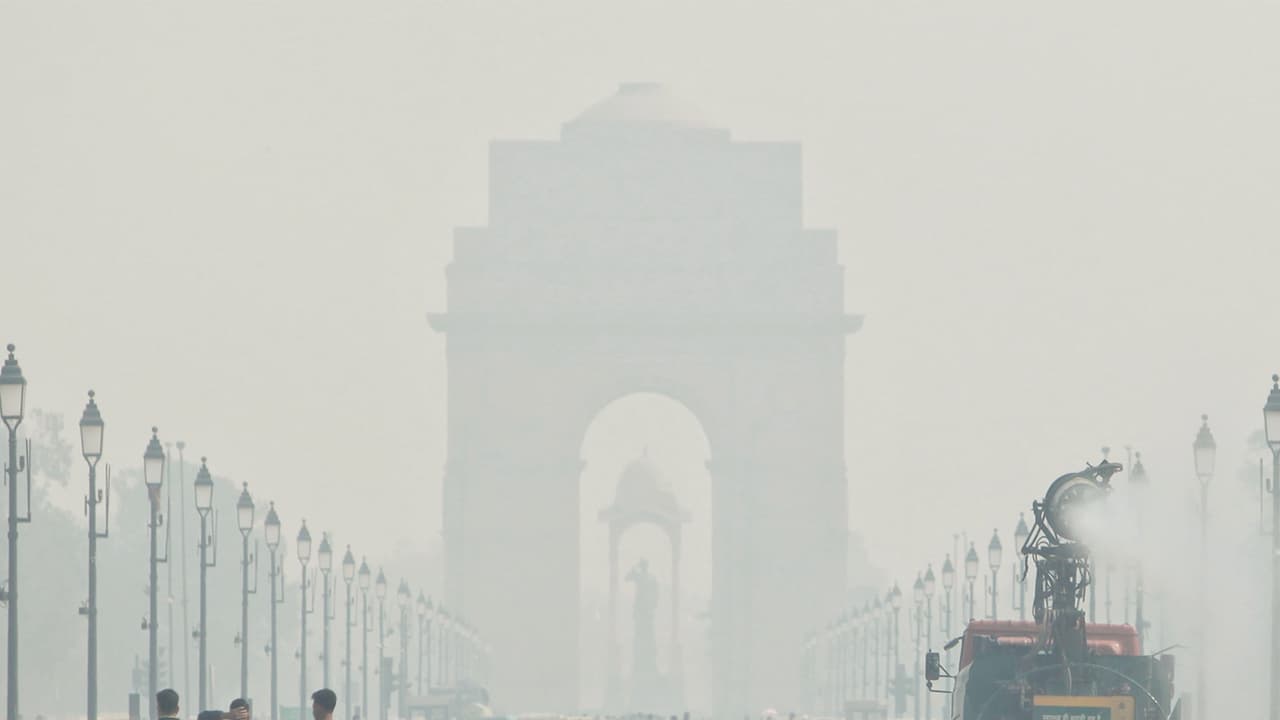Air quality in Delhi has become ‘severe’, AQI stands at 413. Despite implementation of GRAP-III, AQI is above 400 in most places. For this reason, schools up to class 5 will run in hybrid mode.
New Delhi: The air quality in the national capital worsened further on Wednesday. At 8 am, the overall air quality index (AQI) stood at 413, placing it in the ‘severe’ category. This is when the Graded Response Action Plan (GRAP)-III is in force in Delhi and the National Capital Region (NCR). According to Central Pollution Control Board (CPCB) data, pollution levels were recorded at alarmingly high levels at several monitoring stations in Delhi, with AQI exceeding 400 in most areas. Among all the monitoring stations, Wazirpur recorded the highest AQI of 459, which is considered ‘severe’ air quality, while the NSIT Dwarka monitoring station recorded an AQI of 215, which is considered ‘poor’ air quality.
Know what is the AQI in which area of Delhi?
‘Severe’ air quality was recorded at almost all monitoring stations in the national capital, such as AQI 431 in Alipore, 438 in Anand Vihar, 439 in Ashok Vihar, 405 in Aya Nagar, 451 in Bawana, 439 in Burari Crossing, 428 in CRRI Mathura Road, 449 in Chandni Chowk, 429 in Dr. Karni Singh Shooting Range, Dwarka. 422 in Sector-8, 433 in ITO, 446 in Jahangirpuri, 422 in JLN Stadium, 442 in Mundka, 437 in Narela, 440 in Nehru Nagar, 418 in Okhla Phase-2, 436 in Patparganj, 437 in Punjabi Bagh, 432 in RK Puram, 442 in Rohini, It was 403 in Sirifort and 434 in Sonia Vihar.
AQI levels were slightly lower at some stations, but remained in the ‘very poor’ category. These include DTU Delhi (373), IGI Airport T3 (395), IHBAS Dilshad Garden (307), Lodhi Road (309), Najafgarh (384), and Shadipur (392). As per CPCB classification, AQI between 0-50 is considered ‘good’, 51-100 ‘satisfactory’, 101-200 ‘moderate’, 201-300 ‘poor’, 301-400 ‘very poor’ and 401-500 ‘severe’.
With the air quality in the national capital deteriorating rapidly, the Commission for Air Quality Management (CAQM) has already imposed Stage III restrictions under the Graded Response Action Plan (GRAP) across the entire National Capital Region (NCR), bringing Delhi’s air into the ‘severe’ category. The CAQM sub-committee imposed these measures after the air quality index (AQI) in Delhi rose from 362 on Monday to 425 on Tuesday morning. Calm winds, stable environment and adverse weather are said to be the main reasons behind this sudden increase.
In view of the worsening air quality, Delhi Chief Minister Rekha Gupta has announced that schools up to Class 5 will run in hybrid mode, allowing both online and in-person classes, to protect children from toxic air. The Air Quality Index (AQI) in Delhi and the National Capital Region (NCR) has remained in the ‘poor’, ‘very poor’ and ‘severe’ categories for several days. Meanwhile, according to a statement from the Ministry of Environment, Forest and Climate Change, the average AQI (air quality index) in Delhi for the period January 1 to November 9, 2025, has been recorded at 175, while it was 189 in the same period last year. During this period, the level of PM2.5 and PM10 is 75 ug/m3 and 170 ug/m3 respectively, whereas in the same period last year it was 87 ug/m3 and 191 ug/m3.
